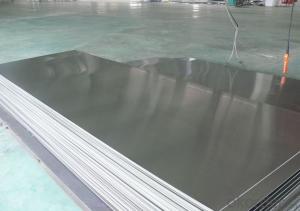Aluminum extrusion profiles are everywhere in our lives, from the window frames in our homes to the bicycle wheels we ride. But what exactly is the science behind these versatile and widely used materials? Let’s dive into the fascinating world of aluminum extrusion and explore how it shapes our world.
The Magic of Aluminum
Aluminum is a lightweight, strong, and corrosion-resistant metal that has a low density compared to other metals. It’s also incredibly versatile, making it a favorite choice for a wide range of applications. The magic of aluminum lies in its ability to be extruded into various shapes and sizes, which is where the science of extrusion comes into play.
The Art of Extrusion
Extrusion is a process that involves forcing a material through a die to create a continuous profile with a specific cross-sectional shape. In the case of aluminum, the process begins with heating the aluminum billet to a specific temperature, making it soft and pliable. The heated billet is then placed in an extrusion press, where a powerful ram pushes it through the die, shaping it into the desired profile.
The Heat is On
Temperature control is crucial during the extrusion process. If the aluminum is not heated to the right temperature, it won’t flow smoothly through the die, leading to defects in the final product. On the other hand, if it’s too hot, the aluminum can lose its strength and structural integrity. The right balance is key to achieving the perfect extrusion.
Precision at Every Turn
The die used in the extrusion process is a precision tool that determines the final shape of the aluminum profile. These dies are designed and manufactured with extreme accuracy to ensure that the extruded profiles meet the required specifications. The complexity of the die can range from simple shapes like tubes and bars to intricate designs with multiple cavities and contours.
Cooling Down
Once the aluminum has been extruded, it needs to cool down to solidify its new shape. This is done through a controlled cooling process that can involve air cooling, water quenching, or a combination of both. The cooling rate affects the mechanical properties of the aluminum, such as its hardness and strength.
Finishing Touches
After cooling, the extruded profiles may undergo further processing to enhance their appearance or performance. This can include heat treatment, anodizing, painting, or other surface treatments that give the aluminum profiles a specific finish or added protection against corrosion.
From Concept to Creation
The journey of an aluminum extrusion profile begins with a concept or design. Engineers and designers work together to create a profile that meets the specific requirements of the application it will be used for. This involves considering factors such as strength, weight, and aesthetics. Once the design is finalized, it’s time to create the die and begin the extrusion process.
Versatility in Action
One of the most remarkable aspects of aluminum extrusion is its versatility. It’s used in everything from automotive parts and aerospace components to architectural structures and consumer electronics. The ability to create complex shapes and designs allows for innovative solutions in various industries.
Sustainability and the Future
Aluminum extrusion is not only versatile but also sustainable. Aluminum is a highly recyclable material, which means that extruded profiles can be melted down and re-used to create new products. This contributes to a circular economy and helps reduce the environmental impact of manufacturing.
The Human Touch
While the process of aluminum extrusion is highly automated, there is still a significant human element involved. Skilled technicians and engineers oversee the process, ensuring that the profiles meet the highest quality standards. Their expertise and attention to detail are what make aluminum extrusion a reliable and trusted manufacturing method.
In Conclusion
The science behind aluminum extrusion profiles is a combination of metallurgy, engineering, and design. It’s a process that requires precision, temperature control, and a deep understanding of materials. As we continue to innovate and push the boundaries of what’s possible with aluminum extrusion, we can look forward to even more exciting applications and advancements in the future.

